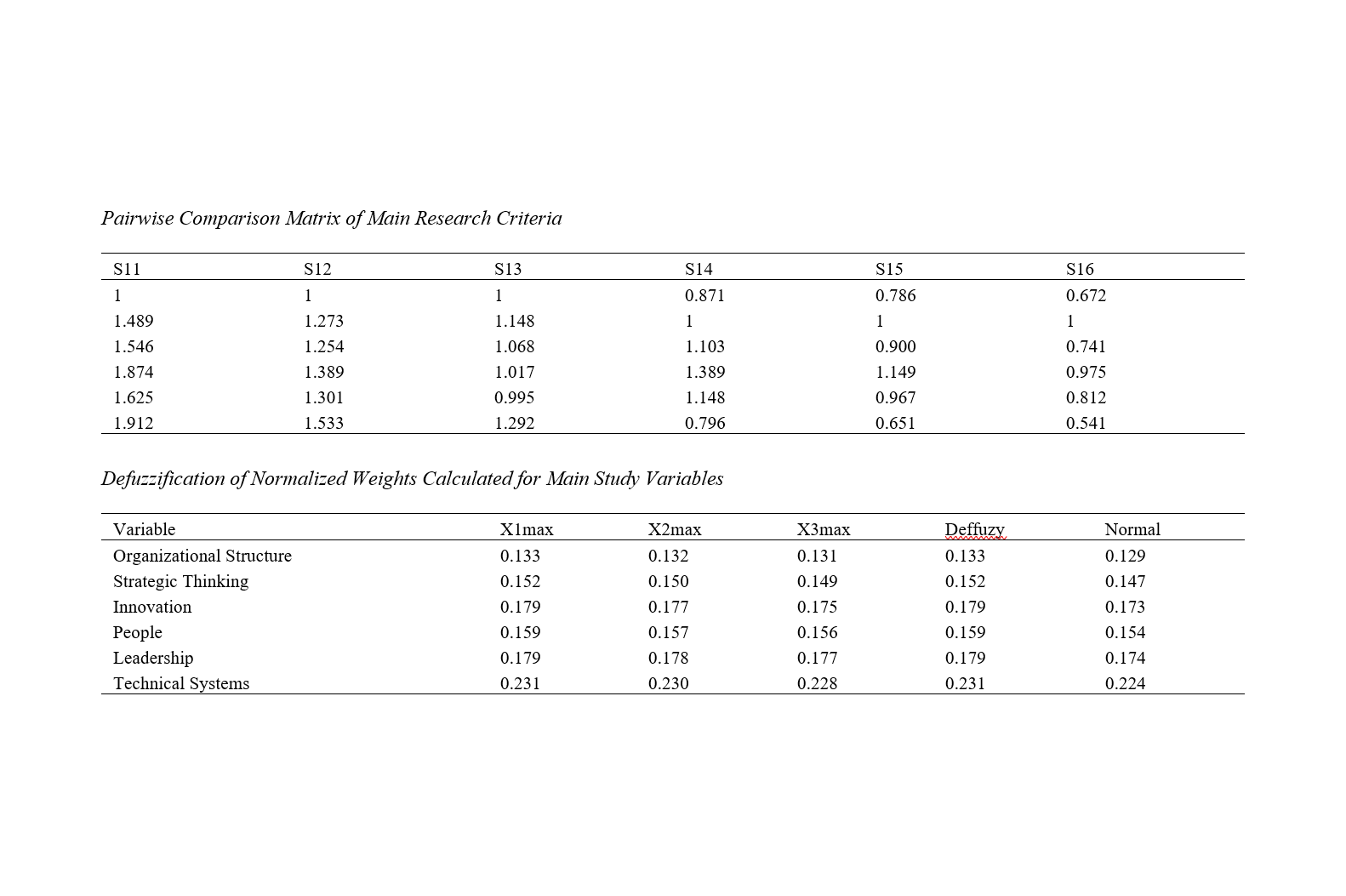Identifying and Prioritizing Components of Cultural Development in Government Organizations Compatible with the Fourth Industrial Revolution
Keywords:
Development, Cultural Development, Fourth Industrial RevolutionAbstract
Objective: The present study aimed to identify and prioritize the components of cultural development in government organizations compatible with the Fourth Industrial Revolution.
Methodology: This research is a fundamental-applied study in terms of its goal. The qualitative part involves deep and systematic analysis of texts and interviews, while the quantitative part is a descriptive-survey study. In this section, the research method is based on interviews. The statistical population for the qualitative part comprises 20 experts from Iranian government organizations as well as university experts and professors. In the quantitative section, the statistical population includes 335 managers and employees of Iranian government organizations. Data collection methods in this research are library and field methods. In the qualitative section, indicators were identified through interview text analysis. Ultimately, based on expert surveys, the research model and researcher-made questionnaire were developed. The quantitative section relied on both descriptive and inferential statistics. In this regard, tests such as one-sample t-test and structural equation modeling were conducted using SPSS and Smart PLS software. Additionally, the fuzzy AHP method was used to examine the priority of components.
Findings: The results indicated that cultural development compatible with the Fourth Industrial Revolution includes six components: organizational structure, strategic thinking, innovation, people, leadership, and technical systems. Among these components, technical systems are the top priority.
Conclusion: The study concludes that cultural development in government organizations compatible with the Fourth Industrial Revolution comprises six key components: organizational structure, strategic thinking, innovation, people, leadership, and technical systems. Among these, technical systems are the highest priority. Effective management of these components can significantly enhance organizational performance and adaptability to technological advancements.
Downloads

Downloads
Additional Files
Published
Issue
Section
License
Copyright (c) 2024 Meisam khoshbakhtian (Author); Ataollah Abtahi (Corresponding Author); Gholamreza Tavakoli, Ali Akbar Rezaei (Author)

This work is licensed under a Creative Commons Attribution-NonCommercial 4.0 International License.















